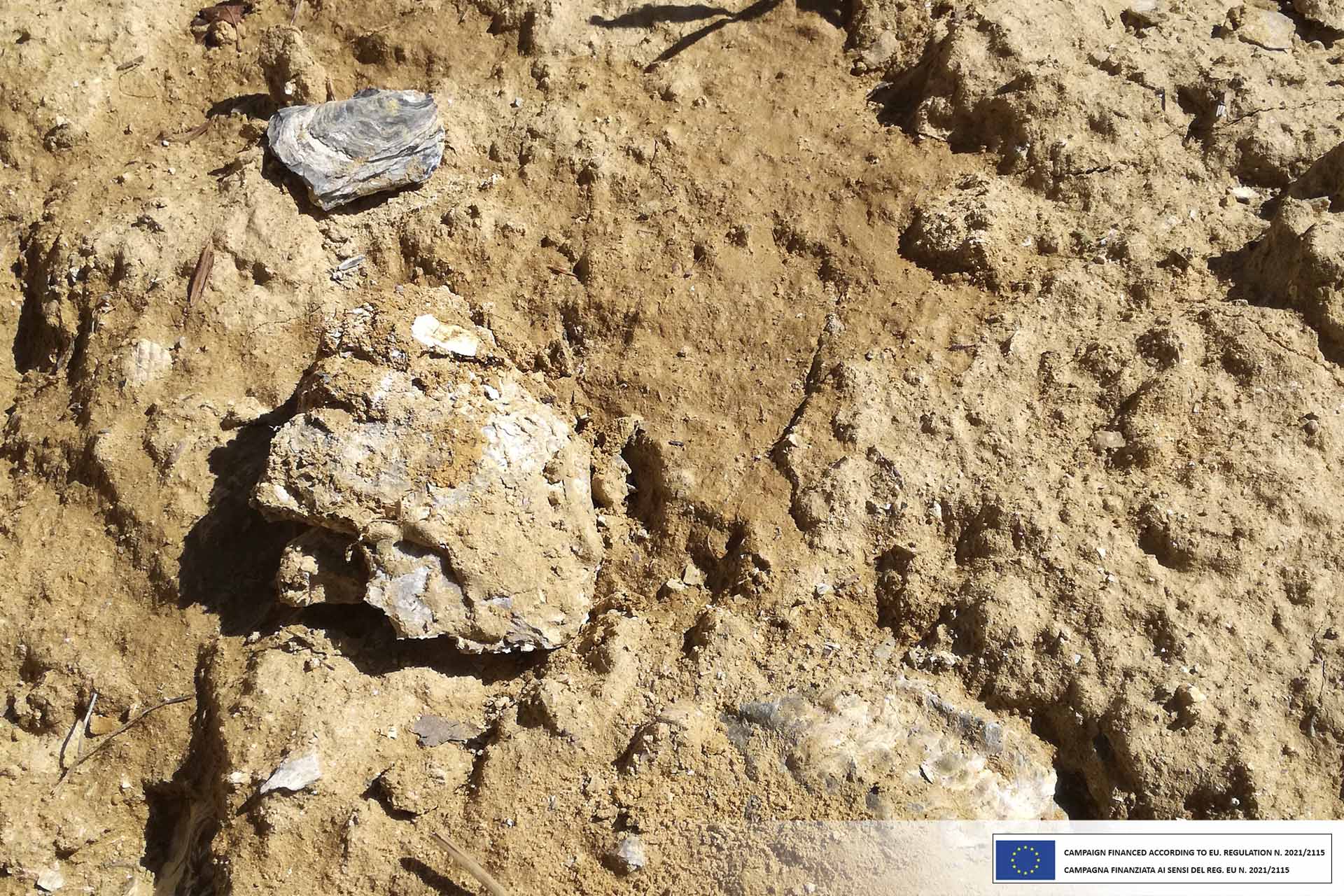As you drive through Monferrato, rolling down your window to let in the spring air and letting your gaze linger on the hills of this incredible territory, your gaze will certainly have lingered on our beautiful vineyards shining in the sun. Yet there is one thing that only a few people stop to observe: the soil the vineyards of Vinchio Vaglio sink their roots into.
A soil that is rich in nutrients, and therefore in life, which chronicles the most precious thing our Cantina has been able to lovingly preserve over the years: our priceless wine heritage.

The geographical area: the Monferrato of Vinchio Vaglio
The vineyards of Vinchio Vaglio’s wine growers extend mainly in the villages of Vinchio and Vaglio Serra and, to a lesser extent, in the neighbouring districts of Incisa Scapaccino, Cortiglione, Nizza Monferrato, Castelnuovo Belgo, Castelnuovo Calcea and Mombercelli. We are located within what can be defined as ‘the heart of Monferrato’. With the Tiglione valley to the north and the Belbo valley to the south, the villages of Vinchio and Vaglio Serra stand on two hills facing one another in the centre of one of the best wine-growing areas in northern Italy,southern Piedmont.
It is no coincidence that the area has been a UNESCO World Heritage Site since 2014. A certification that has enshrined to the world not only the beauty of our vineyards, but also the tradition, history and culture of the winegrowers who have been taking care of them for centuries. On the other hand, who knows what would have happened if, in the 1950s, so many winegrowers had not joined our Cantina Cooperativa when the market was cutting them off in favour of the more profitable hazelnut groves. Most likely they would have had to uproot their vineyards and we would have had to say goodbye to the biodiversity that makes these hills so special.
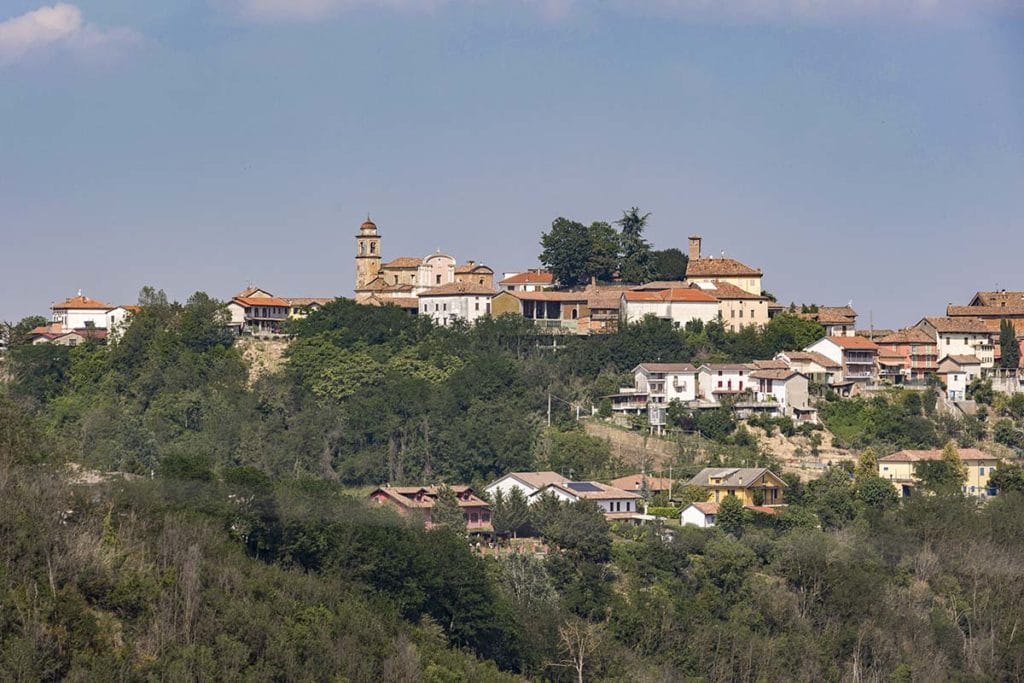
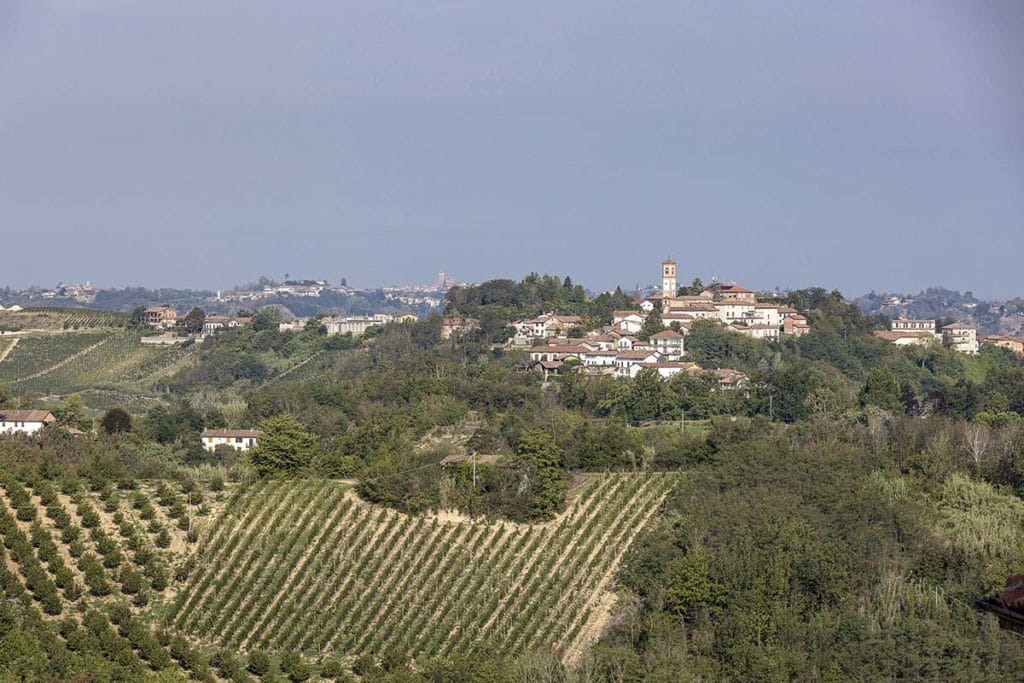
The soil between fossils and traditions
Yet, it is by turning off your car, walking between the rows of vines and bringing your nose closer to the ground that you can see the other side of the land. Here in fact it is easy to find small shells and fossil deposits, extraordinary evidence that in the Pliocene era these hills were submerged by the sea.
This land is marked by natural conditions that are particularly suitable for viticulture, which, in fact, has been practised since the beginning of time: there is talk of vine cultivation in this area as early as the end of the Bronze Age.
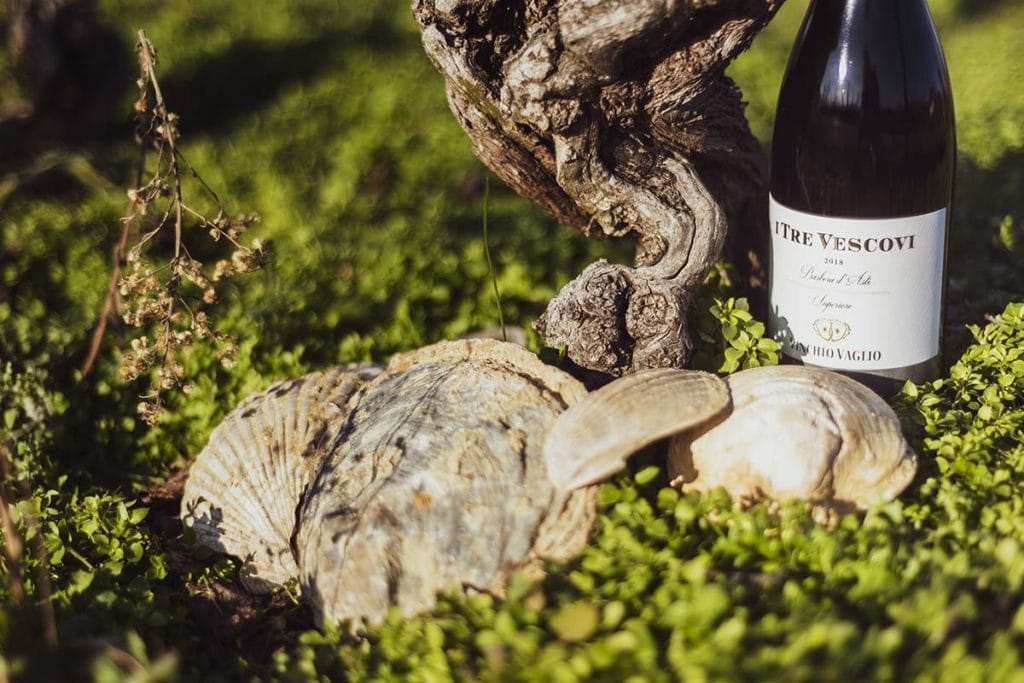
Hills with steep slopes and gruelling viticulture
Most of our vineyards are on hills that are not particularly high, yet with very steep slopes, which makes their cultivation particularly arduous and requires manual work, as mechanical work is almost impossible.
A tiring viticulture, where the work and passion of the winegrower are at the heart of production, but also a viticulture that benefits from optimal exposures.
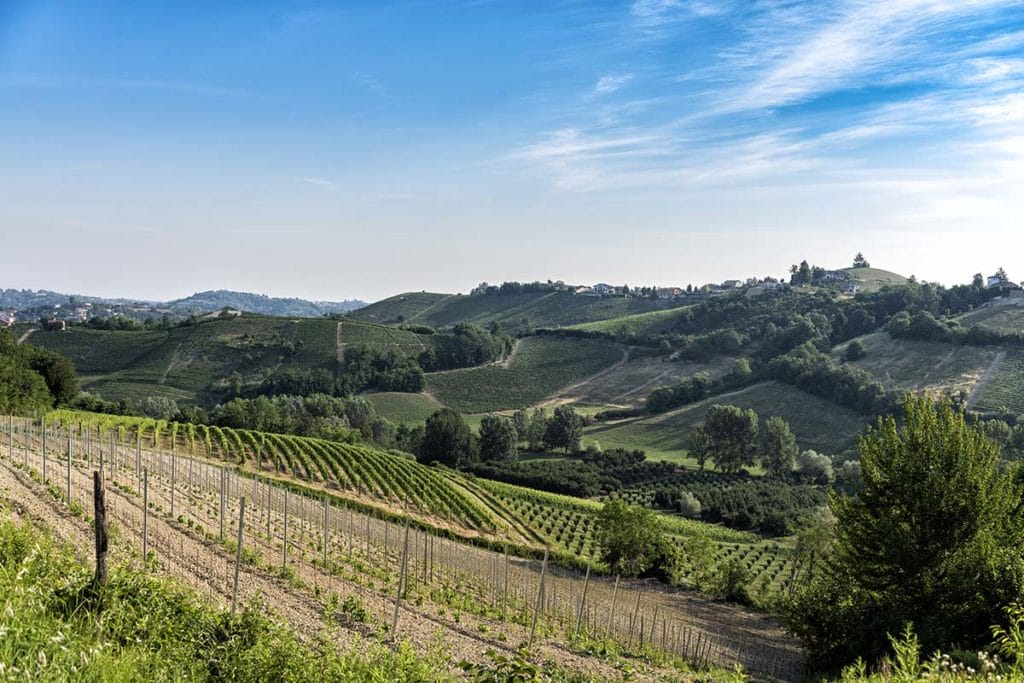
The soil: the lymph of our wine
The soil in this area is naturally calcareous, although its structure is not uniform, with both predominantly clayey and predominantly sandy areas.
In Vinchio, an area typical of Barbera, the clayey-calcareous soils yield wines with good acidity and structure suitable for ageing. The area towards the west, on the other hand, has predominantly sandy soils that give the wines great freshness and considerable elegance. The soils in the Vaglio Serra area have considerable amounts of clay and red earth veins from which wines with greater structure and colour are obtained.
In the Nizza Monferrato area, the indissoluble bond between the city and Barbera stands out, sanctioned today by the ‘Nizza’ DOCG denomination, which prides itself on a very high quality wine produced exclusively with Barbera grapes from this restricted area at the centre of which lie the territories of Vinchio and Vaglio Serra.
In this area, the white soils are clayey and calcareous, whose presence of calcium in the soil favours a good production of aromas, while the clay provides the structure that sanctions the longevity of the wine.
Finally, in the neighbouring villages, there is no shortage of soils with veins of sand, limestone, clays and compact, structured red soils.
The combination of all these elements allows the vines to express themselves at their best with rather low yields that reach a maximum of 1.5 kg of grapes per vine. The temperature fluctuation that occurs between night and day allows the aromas of the grapes to develop at their best.
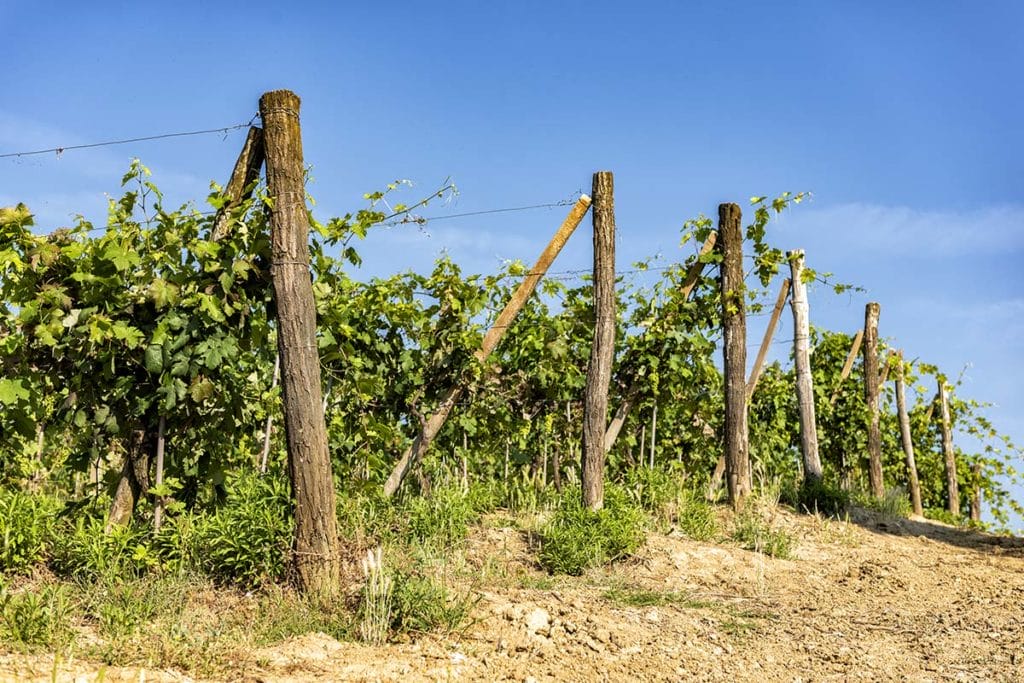
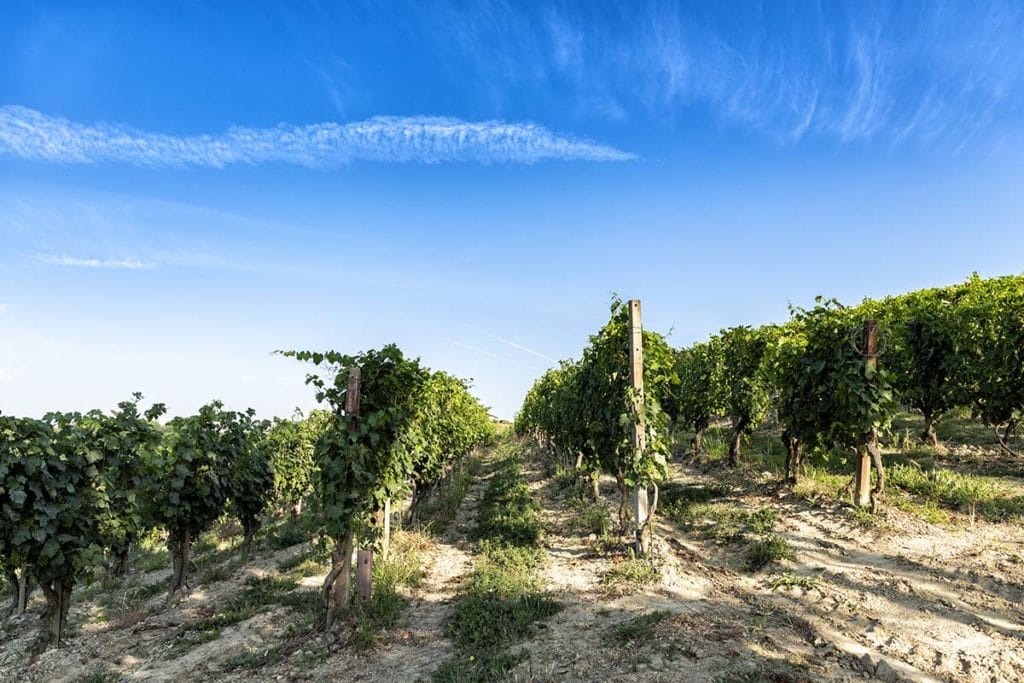

Different soils for… different wines.
With 500 hectares of soils that are so different from one another, each year – regardless of the weather – our winery can choose from an area of vineyards located at different latitudes and exposures, so that it is always able to process excellent grapes.
Such different soils produce equally different wines, since the roots of the vines absorb from the soil all the nutrients that are essential for the growth and ripening of the grapes.
This is how sensational wines are born, because the amalgamation of these pedological characteristics makes it possible to obtain complex and structured wines that are also fresh and elegant, where the aromas and typical expressions recall the roots of the vineyard of origin.

